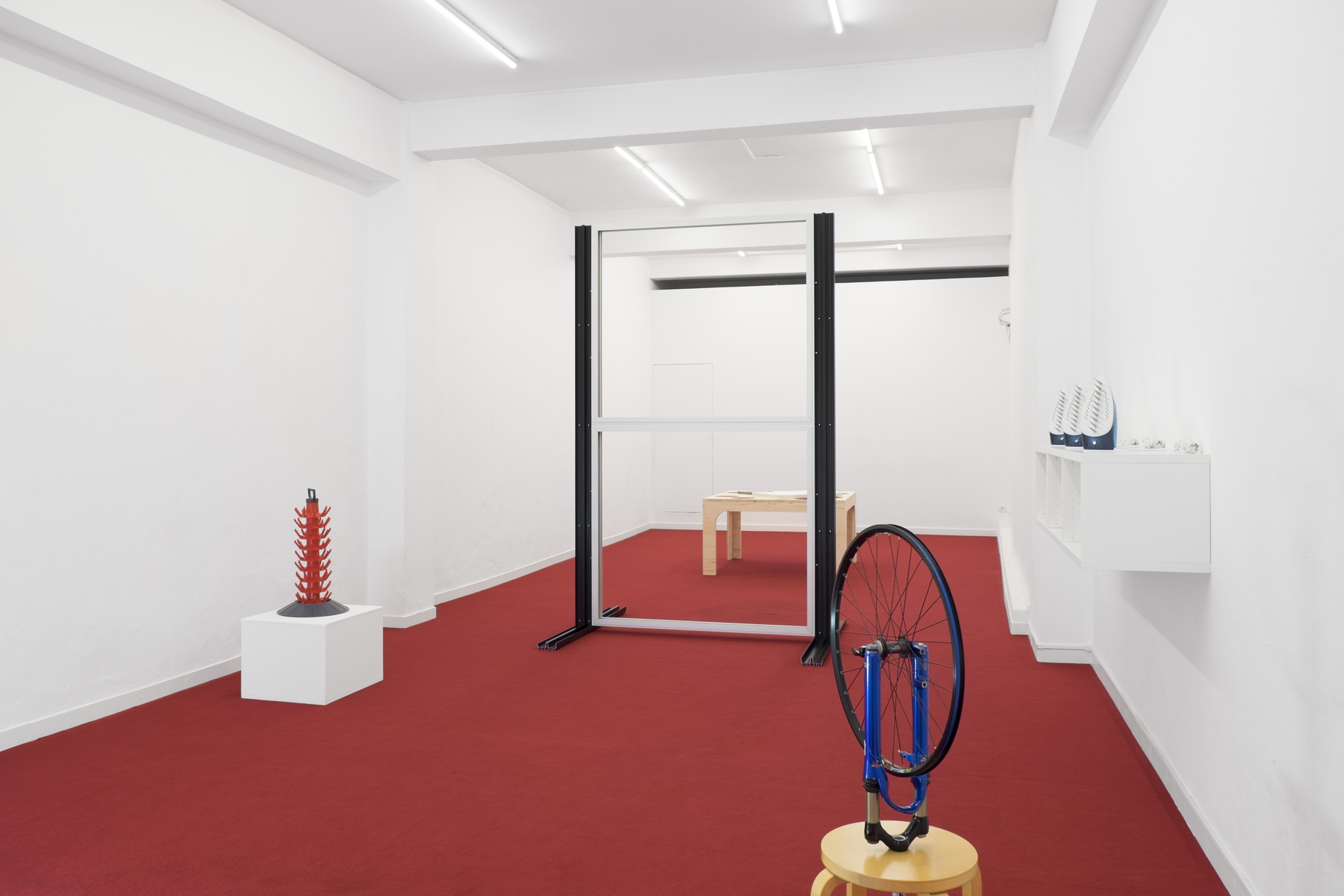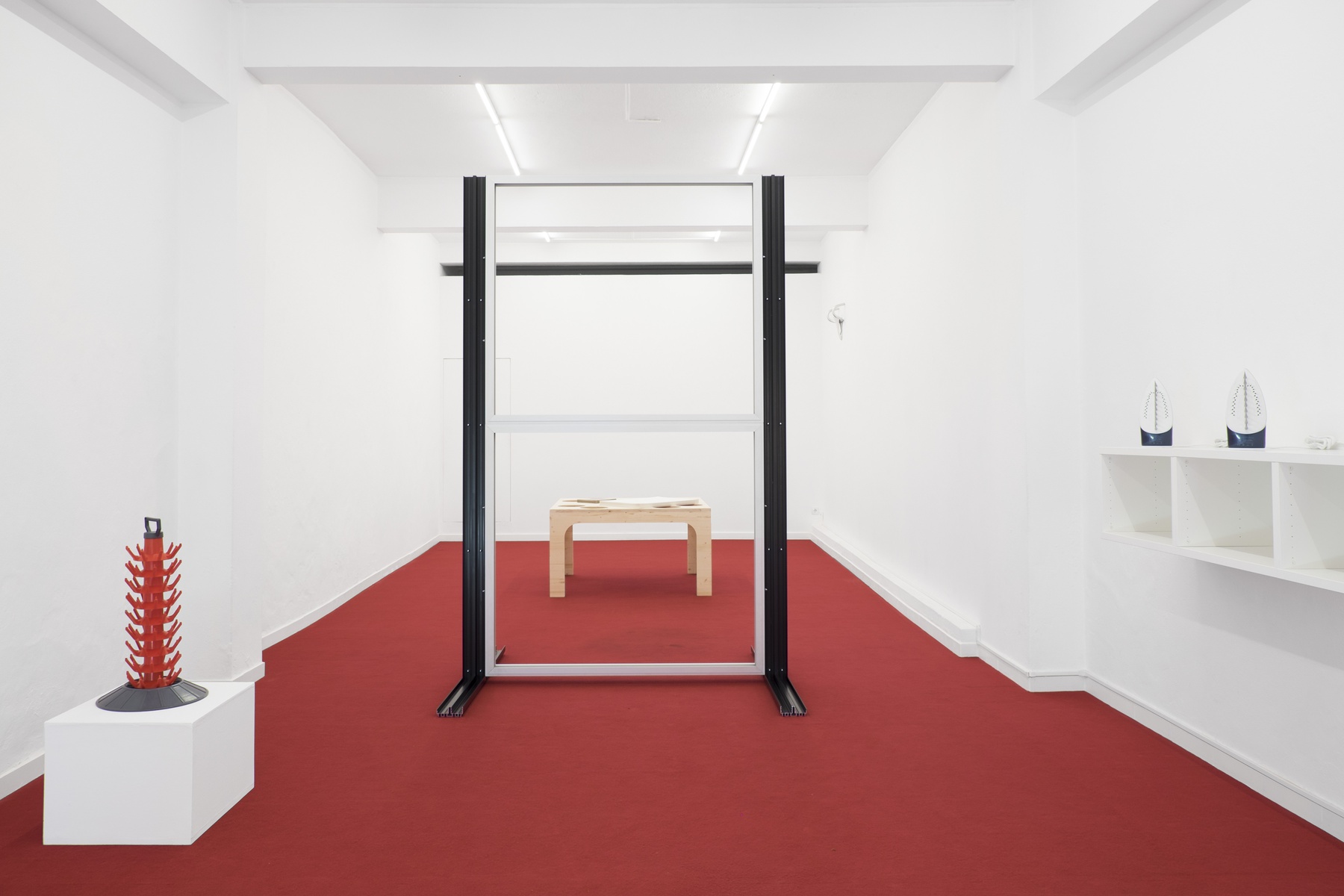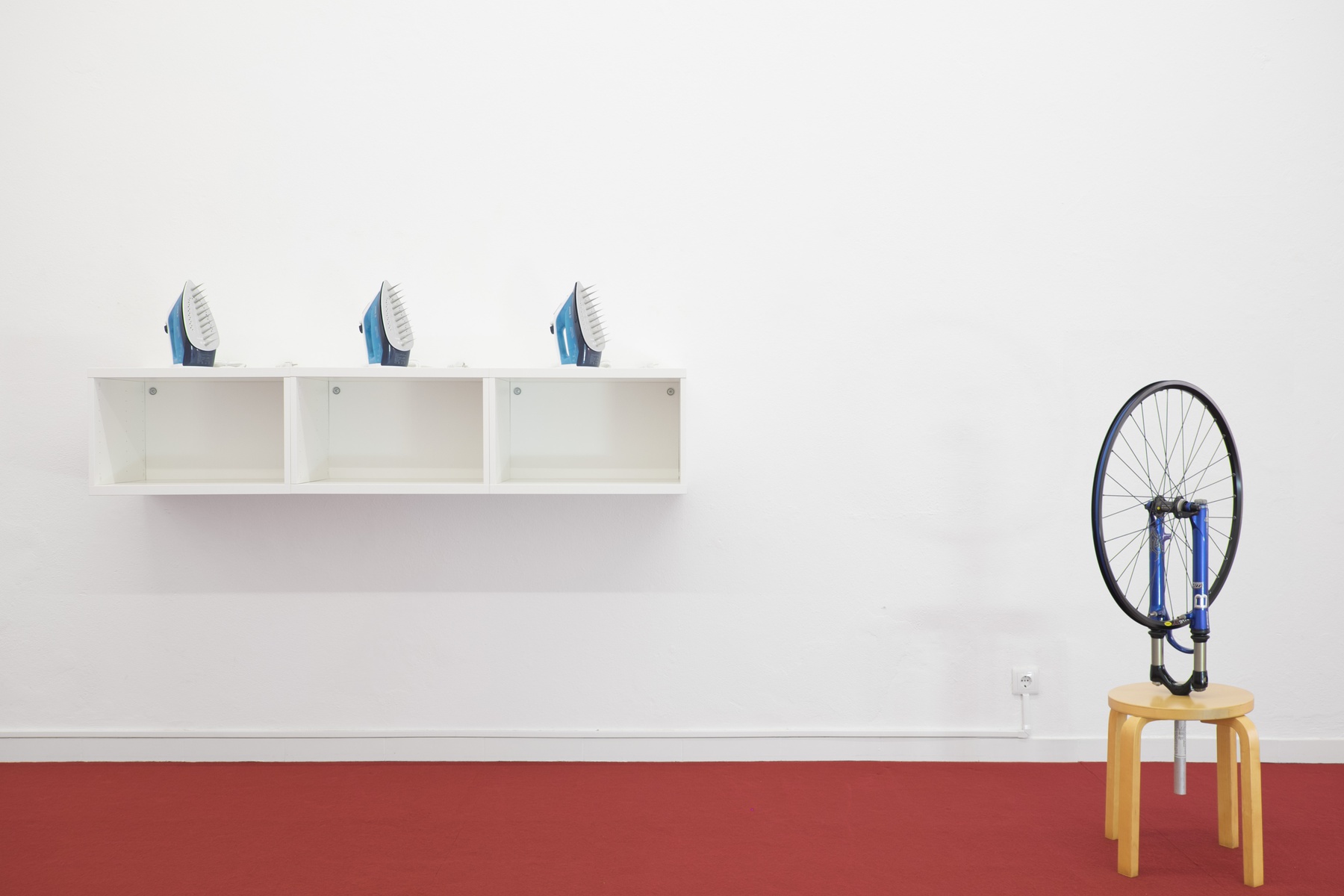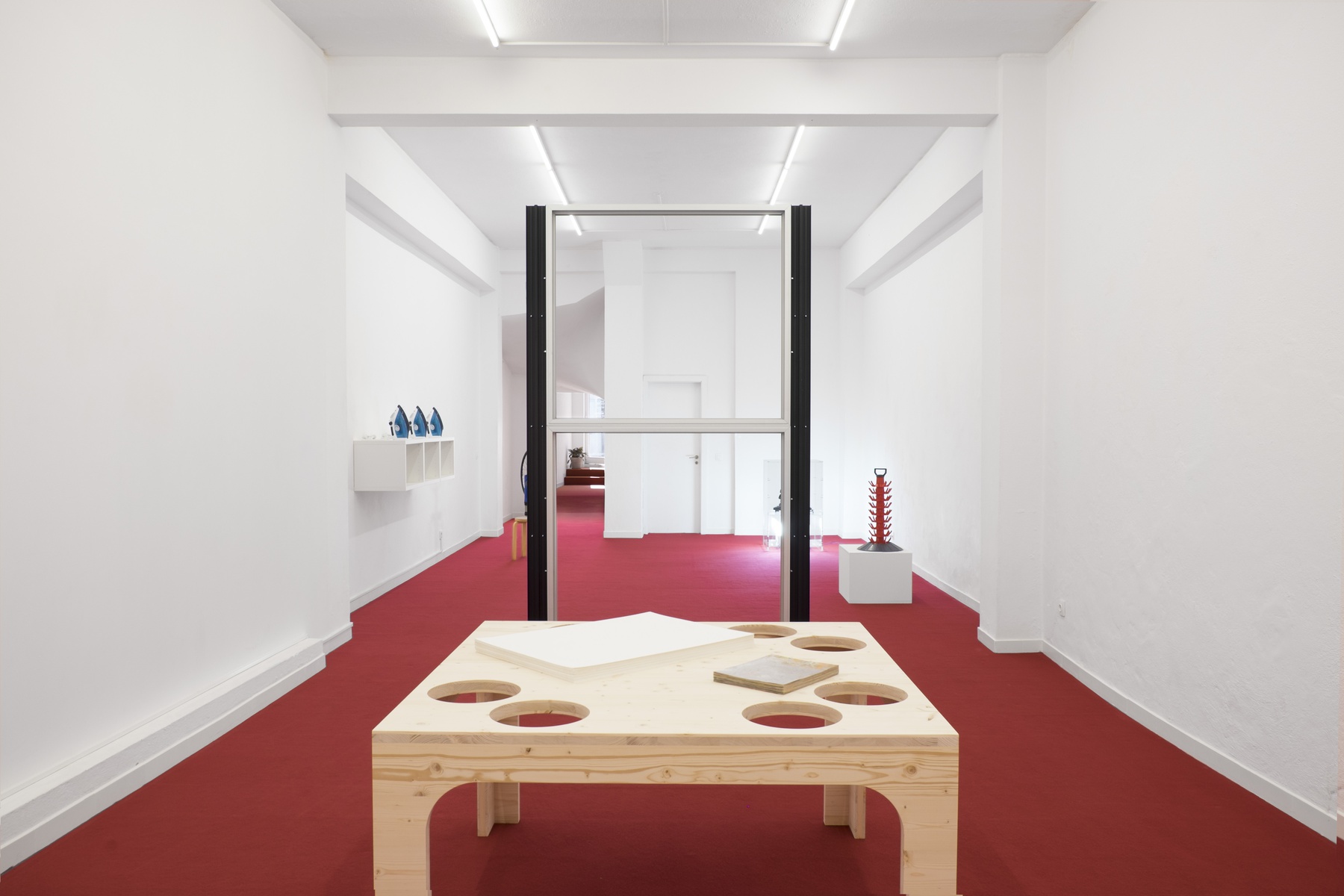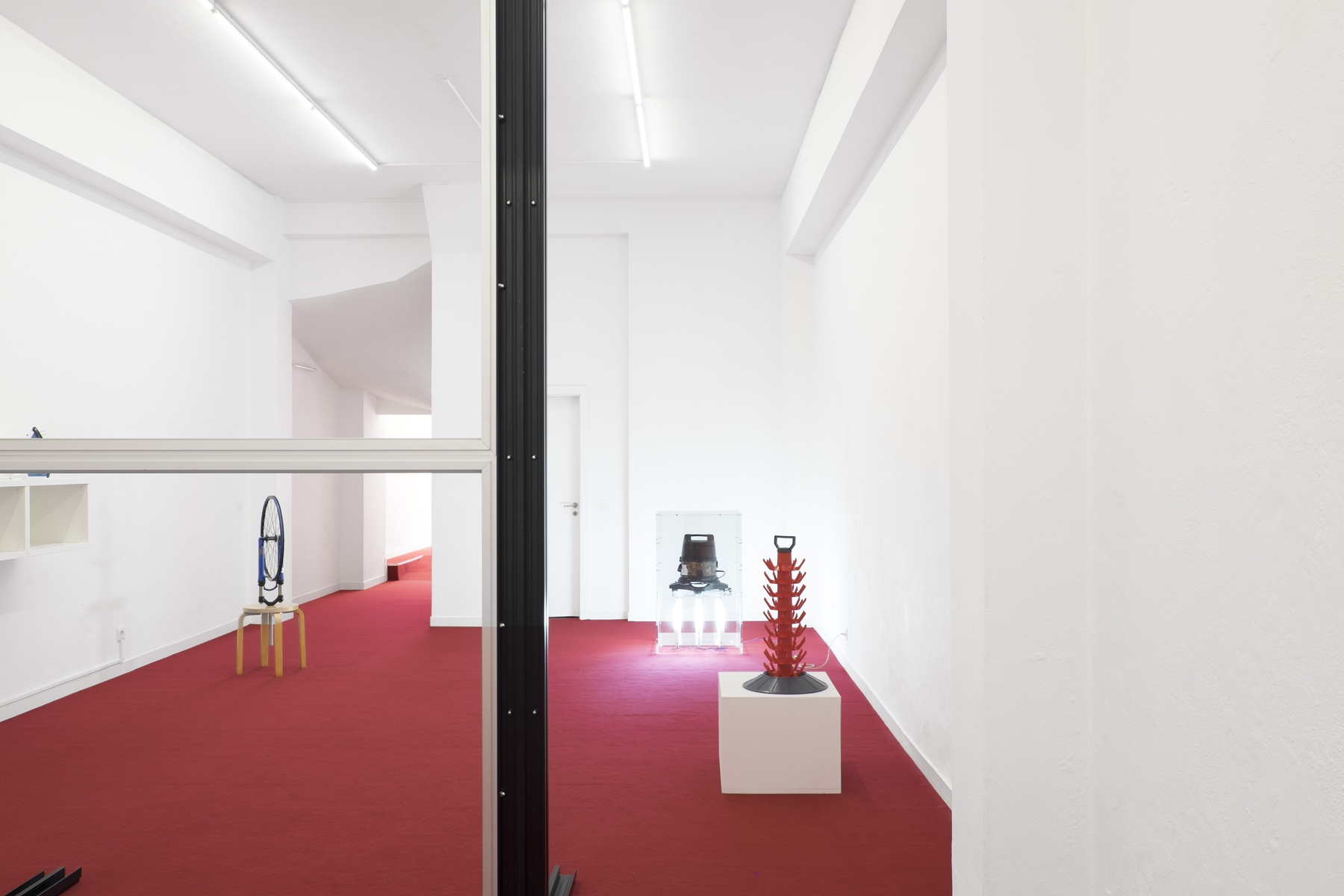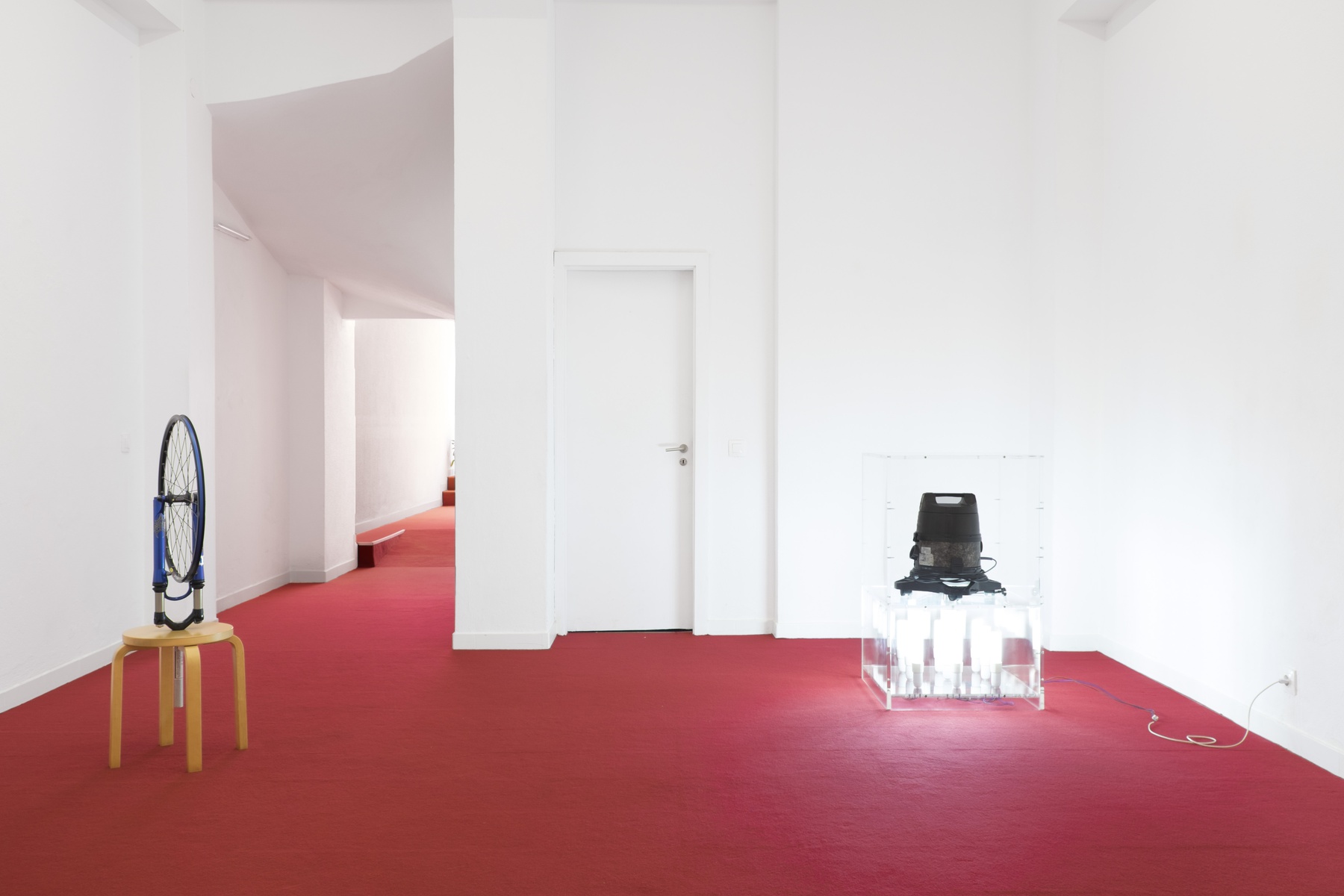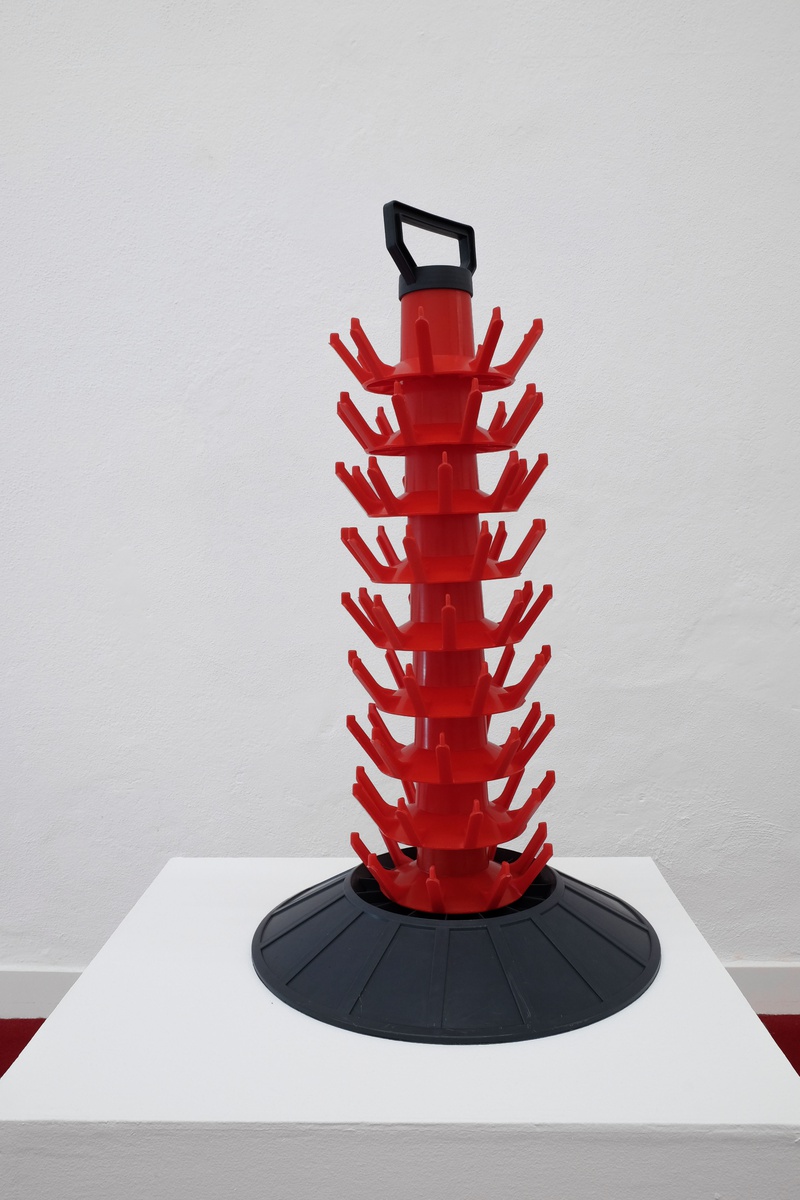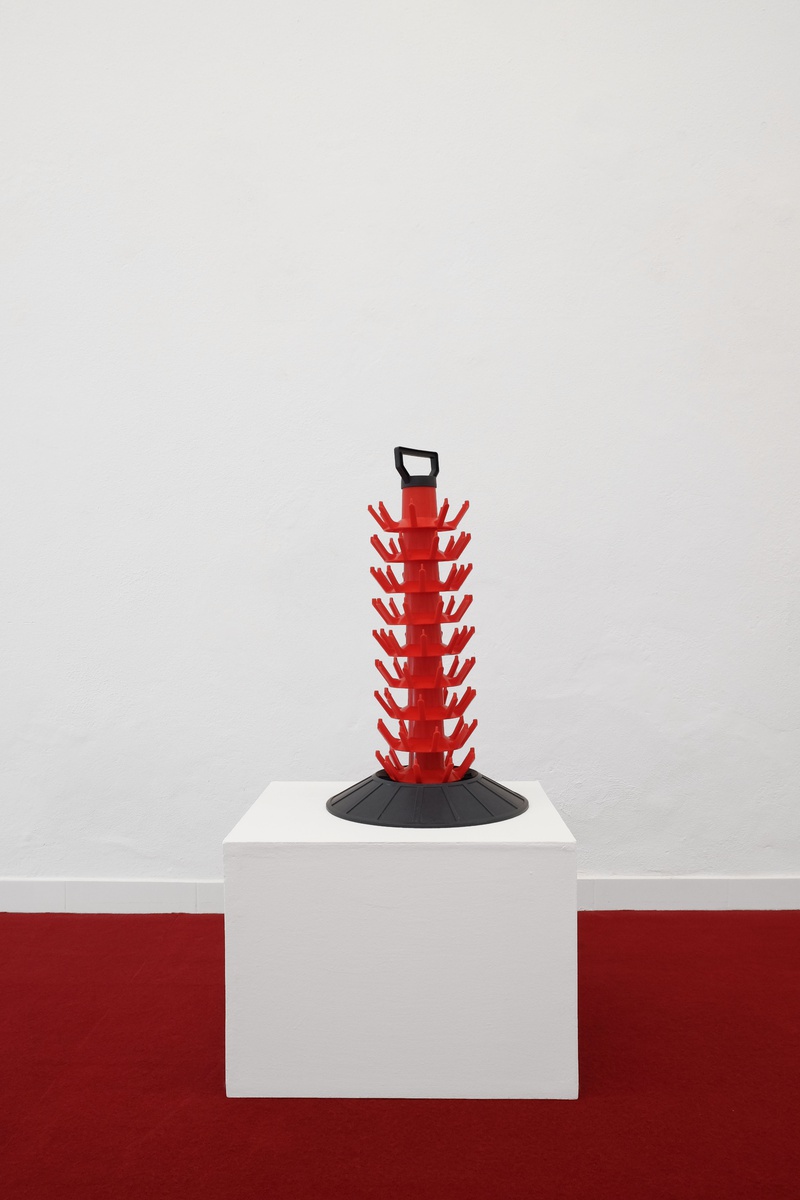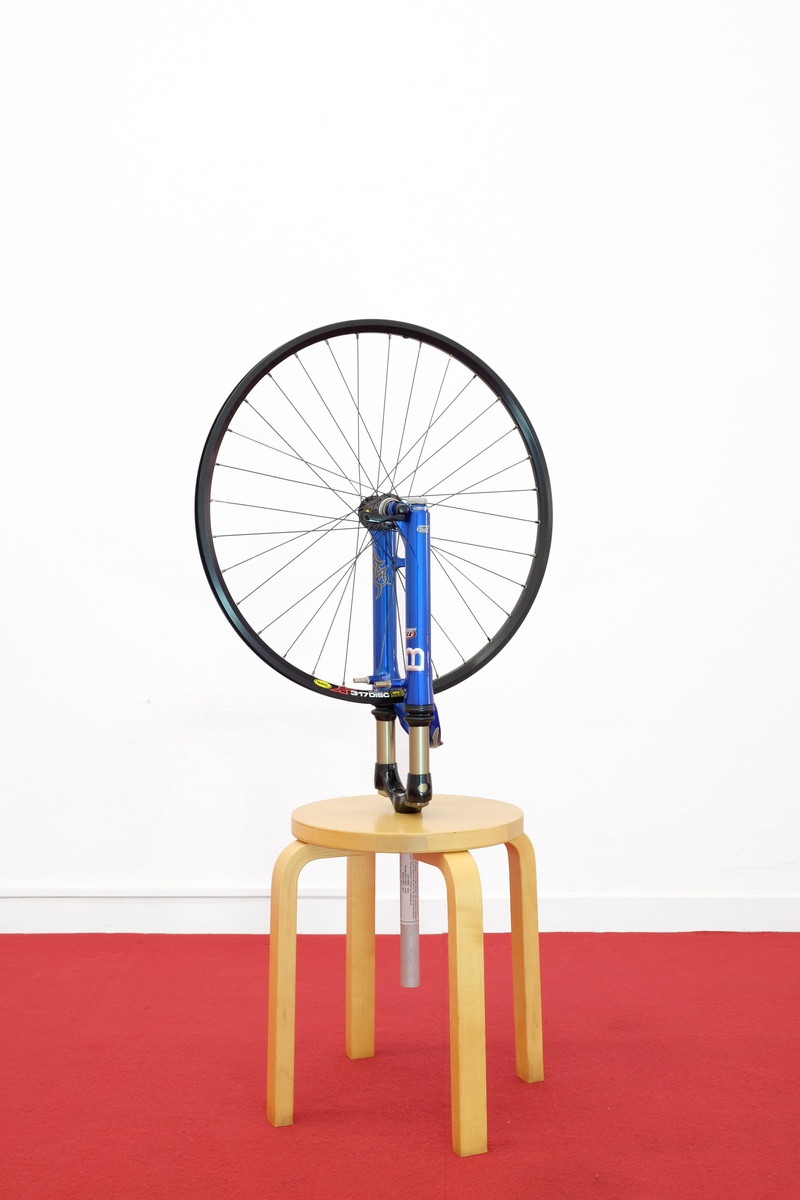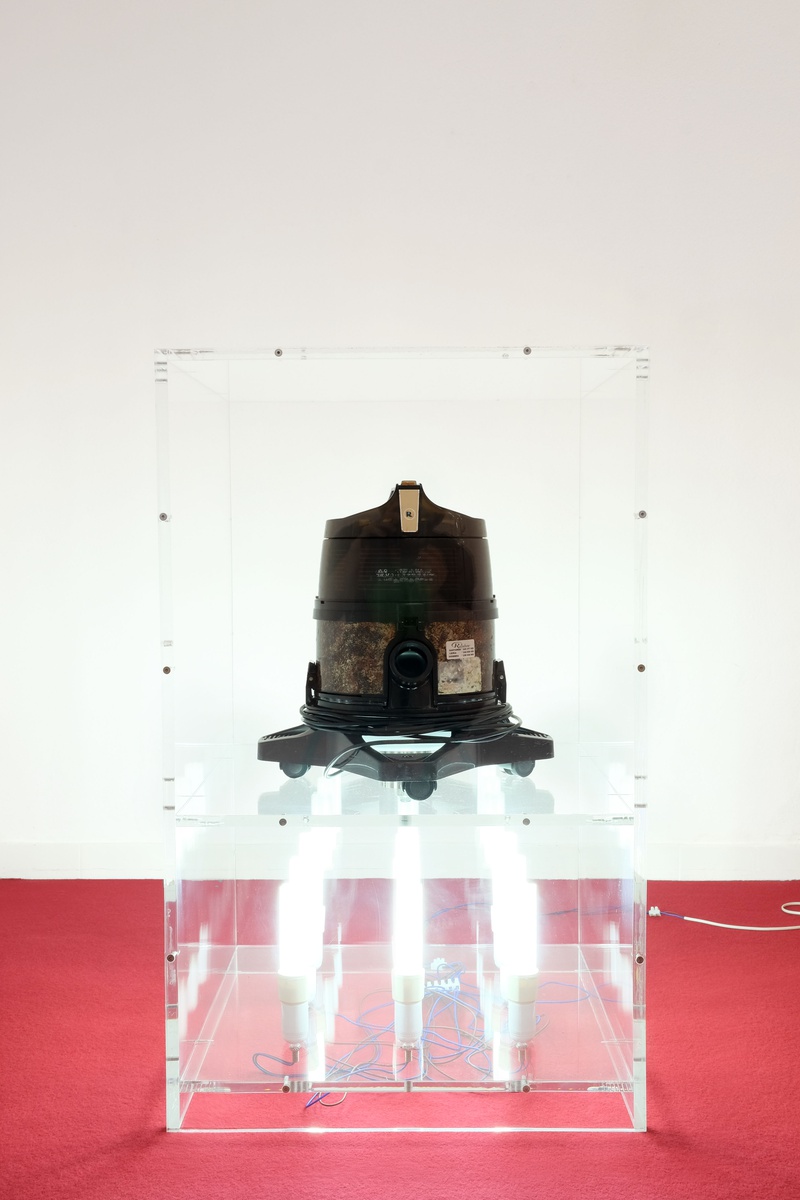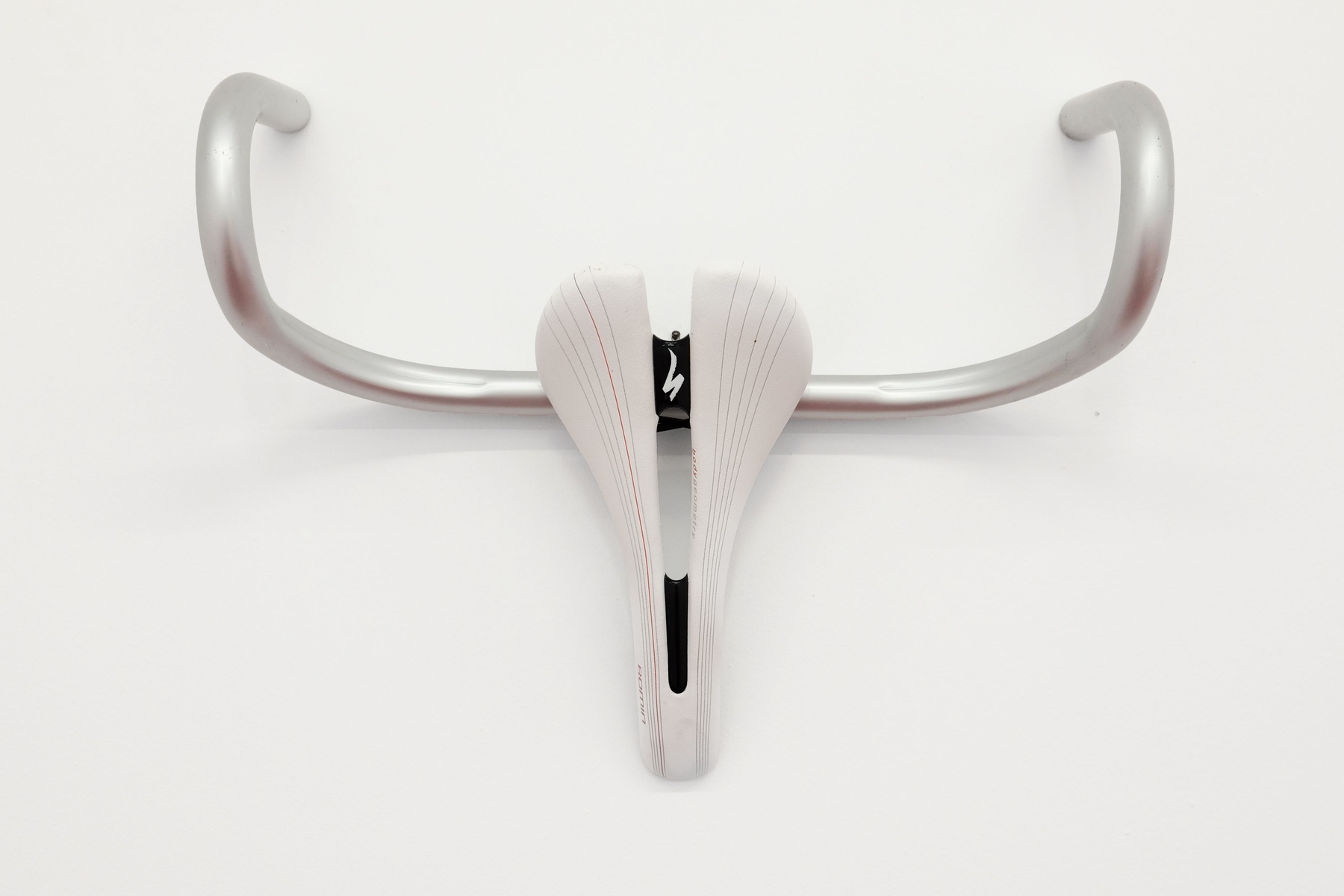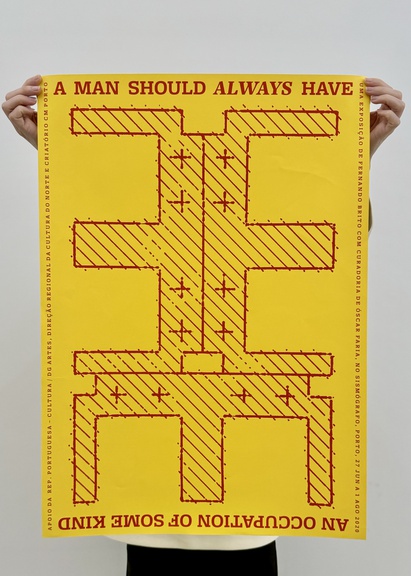A man should always have an occupation of some kind
Exhibition
27 Jun – 1 Aug 2020
Opening
Saturday, 27 June 2020, 15h00
Free admission
The exhibition “A man should always have an occupation of some kind”, by Fernando Brito (Pampilhosa da Serra, 1957), opens this Saturday, the 27th, at Sismógrafo. The phrase that gives title to the show was taken from the play “The Importance of Being Earnest”, by Oscar Wilde. It is a farce or, as read in the subtitle, "a frivolous comedy for serious people", premiered on February 14, 1895, in London.
The body of works presented, mostly unshown, covers a time period of two decades in the mediums of painting, sculpture and drawing. In the exhibition it is possible to unveil three different production lines: the revisiting of canonical works from both modernism and postmodernism, the series dedicated to German abstract expressionism, and a vast set of papers in which the artist reveals to us some aspects of the daily life of the Budonga civilization, which appeared nearly six thousand years ago.
To each his own
Óscar Faria
Today there are still those who doubt the existence of Fernando Brito. These uncertainties reappear especially when a new exhibition by the artist is announced. The most radical current totally denies his existence, supporting that position in a critical analysis of the works presented as proof of the production carried out by this personality. “The carpet doesn’t match the drapes”, we can read in an essay published in an academic magazine. And, in another text, we can point out this other comment: “something doesn’t add up”.
The main reason for these doubts, to which some conspiracy theories can be added, is due to the fact that Fernando Brito has, not one, but several identities, which complicates the task of attributing certain works to the artist. This confusion is increased when scholars come across certain works and identify them as a Duchamp, a Man Ray, a Jeff Koons, a Picasso or a Louise Bourgeois. Being common mistakes, the fact is that they give rise to significant misrepresentations in the context of Art History, thus giving strong arguments to the negationist current, led by the self-proclaimed anti-Brito faction. This group is even pointed out as responsible for a protest where we could read phrases such as “to each his own”, “a pig in a poke” and “a fly in the ointment”.
In view of this situation, Sismógrafo decided to invite Fernando Brito to hold an exhibition in its space so that, once and for all, we can put an end to doubts regarding the existence of this person. It was not a simple process, however, after several failed attempts, a list containing a series of works reached our hands, by registered letter, with the guarantee that they would be delivered in time for the expected period for the set-up of the exhibition. The envelope, having the address of the sender as a PO Box, also included the first act of a play, written by Oscar Wild, with the artist’s express request that this text be printed on the “A man should always have an occupation of some kind” exhibition leaflet. It is this same fragment that we publish here.
As for Fernando Brito, we never got to be with him. We couldn't even speak to the artist over the phone. Everything was handled by effective intermediaries, always diligent in solving the problems that arose. To all our sincere thanks.
Pastiches
A tragi-comedy in five acts
Cast:
Fernando Brito
Bicycle Wheel
Gift
Bottle Rack
Guillotine
Rainbow
Daddy
Extras:
Drawings by the Budonga civilization
German expressionist paintings
Act One
The action takes place outside Sismógrafo, at Rua da Alegria, Porto. Sometimes, without interrupting the dialogues, we can hear seagulls mewing. The characters arrive one by one, staying at the door, while waiting for authorization to enter. During this impasse, they exchange some chitchat. The embarrassment is obvious to everyone: they barely know each other, but they have the strange feeling of having already crossed paths. In the window, serving as a backdrop for the dialogues, there is a poster by Yoko Ono, where we can read the phrase: JOY OF LIFE. The first character to arrive, ahead of the scheduled time, is the Gift. Half an hour later, the Bicycle Wheel appears.
Bicycle Wheel: Good afternoon
Gift: Good afternoon.
BW: Do you know if Mr. Brito has arrived yet?
G: I guess so. I was told that he is meeting with those responsible for the space to deal with last minute issues.
BW: I hope it doesn't take too long. I hate to stay so long without moving. I love when Mr. Brito makes me spin.
G: Me and my little sisters are still wondering what our destiny will be. Mr. Brito told us that he wanted to put us on a shelf with a strident color. We just looked at him in silence (the Gift shrugs). So, I came alone, my sisters stayed at home ironing clothes. I will call them as soon as I have news. Did I tell you that we're twins? Triplets! Copies of each other, the differences are hardly noticeable.
BW: You remind me of an object that I saw many years ago in a museum. A work called “Cadeau", made by Mr. Man Ray, an excellent artist, by the way. You really have a lot of similarities with it ... maybe it's family, isn't it?
G: It’s not the first time that I am compared with this work, which I have seen in photographic reproductions in a magazine, one day we all went to the hairdresser. I came across it in a supplement dedicated to the relationship between art and fashion. And I immediately said to my sisters: look, girls, what a coarse work... It was then that I also learned that Mr. Man Ray rip a dress with that piece, after being used by a model during a photo shoot. (pause) Me and my little sisters were made by Mr. Brito. At least, that's what he tells us. We hardly distinguish ourselves. Perfect, well finished… We are ready to be placed on a shelf, on a plinth, on the floor... When you arrived, I also felt that I knew you from somewhere. Is it possible that I came across you in a museum? Yes, I remember clearly now seeing you in an exhibition by Mr. Duchamp. Is it possible? What a wonderful work! Do you know that the original disappeared? That Bicycle Wheel was a copy… I liked it so much that I didn't even care about that detail, for if Mr. Duchamp himself signed it… those who go to Lascaux also do not see the real engravings ... they see imitations ... and they have no signature! It was really similar to you: a bicycle wheel upside down on a bench ... and it also lacked the tire ... maybe it was stolen ... did they steal yours?
BW: Mr. Brito had the idea of making a version with a tire, but, on that occasion, he was unable to collect enough money. You know, Dona Prenda, Mr. Brito had already told me about Mr. Duchamp. He likes him a lot. He even made one or other work inspired by him, who was very friendly with Mr. Man Ray. I bet you ignored this... They met at the Kreymborg cottage in New Jersey, across the Hudson River. It was Mr. Arensberg who promoted the meeting ...
G: (abruptly interrupting BW): …Yes… Mr. Brito also told me this story. I did not ignore it... and I tell you more, dear Wheel, I remember him telling me that Mr. Duchamp and Mr. Man Ray hardly spoke to each other on that occasion: one had some limitations in his English, the other knew next to nothing about French ... (Gift laughs alone) At that time, Mr. Stirner's anarchist ideas were in the air. Let me tell you that you are also very well finished... you remind me of a monk meditating... standing on a bench, you and your shadow. What a beautiful image, the union of a place to sit with a wheel upside down! Stillness and movement captured in a figure frozen in time!
BW: Yes… yes… Mr. Duchamp and Mr. Man Ray were great friends. They used to go out at night ... they liked to eat scrambled eggs with apple’s jam. Mr. Man Ray even photographed Mr. Duchamp with a shaved star on his head. And he also captured an image he called “Dust breeding", where you can see “The large glass”… Whenever I look at this photograph, I remember the Nazca Lines ... a strange landscape seen by a bird.
(in the distance, at the top of the street, we can see the Bottle Rack approaching)
Bottle Rack (to himself): God help me! I will be very late!
(Bottle Rack arrives at the door of Sismógrafo).
BR: Oh my ears and whiskers, how late it’s getting!
G: You look nothing like a white rabbit ...
BW: Indeed!
BR: Good afternoon, ladies! Sorry, I was memorizing a line for a play… I thought I would never arrive… am I too late?
G and BW (simultaneously): Good afternoon.
G: Mr. Brito is in a meeting.
BR: I cannot understand his British punctuality mania... not even his preference for Swiss watches, the old ones, the ones you have to wind up. You know what I'm talking about, don't you? (silence) I really thought I could get here before Mr. Brito, because he went to bed when the day was breaking, after a great feast with friends... they ended the cellar… they even drank the 1966 Barca Velha… a few days before, they exhausted those of 1991… like the 1997 Pêra Manca... They all ended up naked in the pool yelling Budonga at the top of their voices, all this in the middle of the meowing of cats in heat… For me, that had just started… Budonga… Budonga… Budonga… One even threw up, imagine! As if that were not enough, they also decided to go to the field to do target shooting with the bottles. They all broke with the lead, for my sins, so I stayed there, once again, drying alone, what a drag! Budonga… Budonga… Budonga… what hell of civilization did they come up with…
BW: Wouldn't they be saying long Buddha instead? A long life for the Dalai Lama? Do you know the message addressed by Antonin Artaud to Thubten Gyatso, published in 1925, in the magazine “The Surrealist Revolution”? "Teach us, Lama, the material levitation of bodies and how we can no longer be held by the earth”. They must have been levitating and took the opportunity to greet the morning star, Venus...
BR: No... That was really a rural Dionysian... it was cold and they stood in line, in a phallic procession, a phallophoria... one of them started jumping with a single leg over some bottles of wine made from old vines and harvested on full moon nights... luck that it didn't go awry... just broken glass and a cut on one foot… Budonga… Budonga… Budonga…
G (with perky air): A pity I wasn't invited to the procession... I would have liked to tear up a few clothes... this before they threw themselves into the pool, of course... with that chill in the air, it is surprising that nobody caught a cold.
BR: Too bad, dear friends. I haven't felt a bottle in my arms in years. The perfume of the consumed wine is one of the great pleasures of a lifetime. With people like that, I can't even dream of feeling a drop of 1863 Porto again, my most vivid memory, smelled even before that year's precious liquid was bottled in "demijohns": that nectar, my dear ... I owe a debt of gratitude to Mr. Brito, for this unforgettable, unique moment ...
(G and BW look at each other with complicity)
G: Are you thinking what I'm thinking?
BW: I think so…
G: Shall I tell him?
BW: Go ahead…
G: Dear Rack, wouldn't you by any chance have been made by Mr. Duchamp?
BR: I don't know where you get that from. I was found by Mr. Brito, who adopted me as soon as he laid eyes on me: love at first sight. Mr. Brito has an affection for me similar to the one he has for his countless cats. When he doesn't see me for a long time, he calls me “little rack” …
G: This story is in all respects identical, with the exception of the most intimate passage - which is, by the way, ridiculous -, to the one that Mr. Brito told me about Mr. Duchamp, who adopted a support for 50 bottles, assuming its paternity.
BR: Yes, I was also informed about this matter by Mr. Brito, who, at least, has the advantage of never dressing as a woman and never adopting a pseudonym like Rrose Sélavy…
(The Guillotine arrives)
G (with some aggressiveness, turning its sharp peaks to the Guillotine, before this one can greet the other objects): Have we been introduced?
GUI: Unless it was in another life… Good afternoon everyone.
BW and BR: Good afternoon.
BR: Do you believe in reincarnation?
GUI: Sometimes I have the feeling that I was “The large glass”… Mr. Brito explained to me that this is the name of a work by Mr. Duchamp, however he also told me that there was another gentleman, Joseph-Ignace Guillotin, who would have made my utility revive during the French revolution. He, Mr. Guillotin, said that death by decapitation was more human than that caused by hanging or by the use of an ax. And by the way (addressing specifically to G, with a contempt that would shiver even the bravest), I am a work of art, I was not collected from garbage, bought in a store, nor adopted like you...
G: I only see bones ...
BW: She is a poor widow, that’s what she is... she lacks everything ... only the frame is left ... even the celibates abandoned the boat ...
G: I remember seeing a figure with her profile but younger and with some cracks, in a museum. Paris? Stockholm? Philadelphia?
BR: Philadelphia.
BW: There are some copies… Mr. Hamilton made one, Mr. Linde another… the students of Mr. Yokohama and Tomo, another one. Dissatisfied with the first version, Mr. Linde built a new piece with the help of Mr. Samuelsson and Mr. Stenborg…
BR: There is also that of Manneville-sur-Risle.
BW: True, I was forgetting that one.
GUI: So many?
BW: Well, there is no turning back: it is a great temptation.
GUI: And what did Mr. Duchamp say about the subject?
BW: Mr. Duchamp said that the copies did not replace the original.
BR: “A copy remains a copy". I remember these words as if it were the first day I heard them from Mr. Brito, precisely in an explanation about Mr. Duchamp.
BW: I was very impressed with that class, where I learned that Mr. Duchamp only certified as copies Mr. Hamilton and Mr. Linde's pieces, in this case the first version... There are other words that serve to classify the works made by Mr. Duchamp from his own originals: replica, reconstruction, edition. Semblance matters most. The more similar to the original, adding the freshness of a freshly made thing, the better ... this is called perfection.
(Without anyone noticing, Mr. Fernando Brito was following the conversation with attention for some time. Now, seeing the dialogue go sour, and preventing any behavior that could damage a piece, he interrupted that farce, more like a play by Gil Vicente)
Fernando Brito: My dear pastiches either you end this mess or I will leave you out of the exhibition. I thought I had taught you to behave in public. I see that it is pure illusion of mine... More: the Budongas have been installed since yesterday and have not caused any disturbance: it must be the fatigue accumulated over six thousand years. Lol. And please keep your social distance.
(F.B., after taking a break, and while straightening his beard, looks at his works one by one, feeling inexpressible inner satisfaction. However, a certain restlessness came over him when he realized that some of the pieces for the exhibition were missing)
F.B.: Has anyone seen Daddy, the Bull Head and the hideous German expressionists?
BW, BR and G (in chorus, rejoicing): No!
G: They should only arrive in a few years… You would have a much better exhibition just with our presence, Mr. Brito.
GUI: I can cut your sharp edges, Mr. Brito.
F.B.: Silence!
(Mr. Brito returns to Sismógrafo, leaving his pieces without words, left to themselves, in a deplorable manifestation of art in the public space, a place for which they were not manifestly conceived. Inside the space you can still hear the voice of Rainbow)
Rainbow: Mr. Brito, before opening the exhibition can you take me out of the box to vacuum the carpet? It's just that it is a little dirty and so my shine won’t be the same for the visitor ...
End of Act One.
Curtain.
Exhibition
27 Jun – 1 Aug 2020
Opening
Saturday, 27 June 2020, 15h00
Free admission

